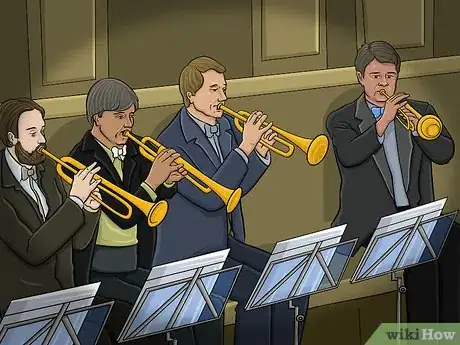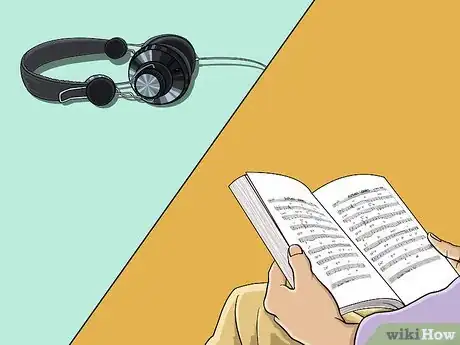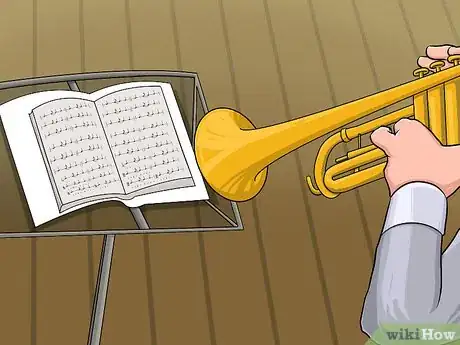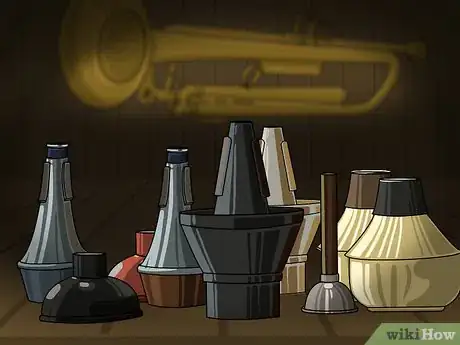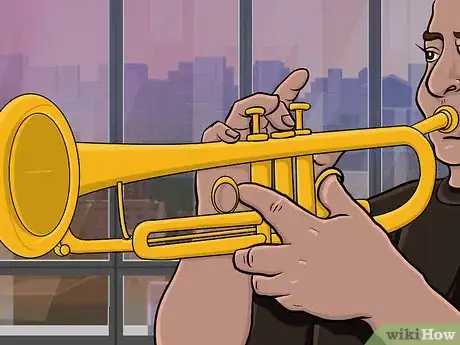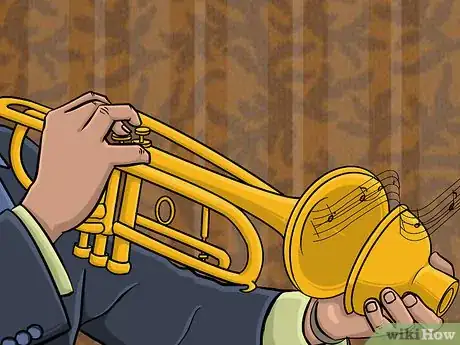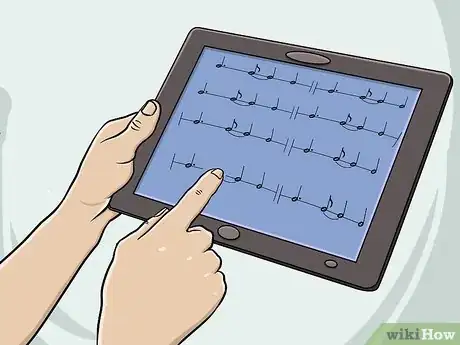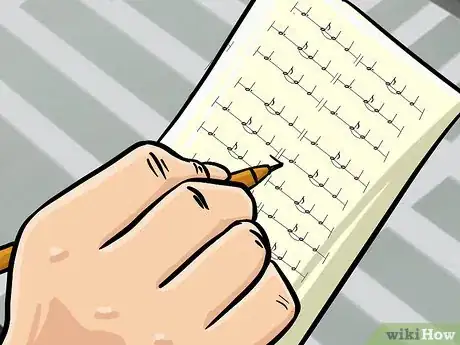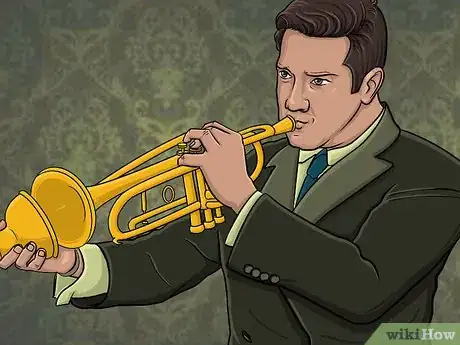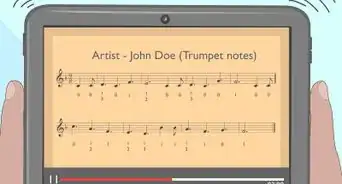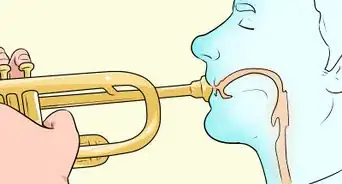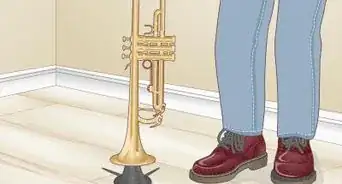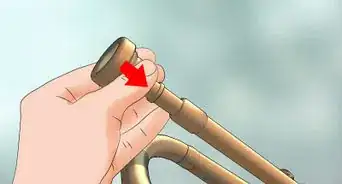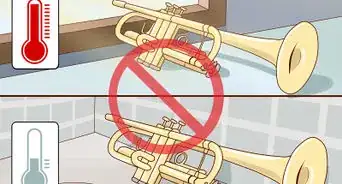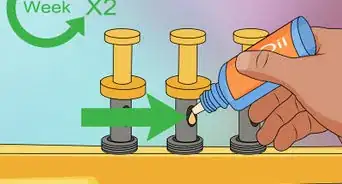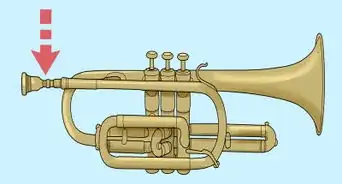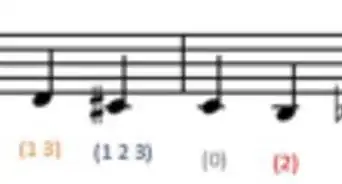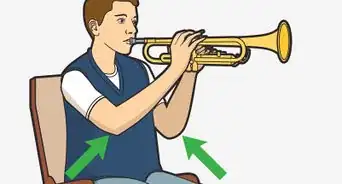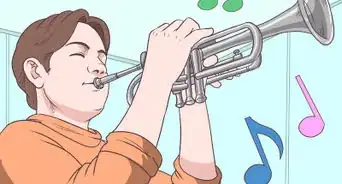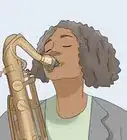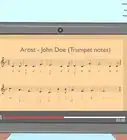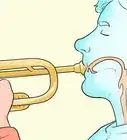This article was co-authored by wikiHow Staff. Our trained team of editors and researchers validate articles for accuracy and comprehensiveness. wikiHow's Content Management Team carefully monitors the work from our editorial staff to ensure that each article is backed by trusted research and meets our high quality standards.
There are 8 references cited in this article, which can be found at the bottom of the page.
This article has been viewed 70,190 times.
Learn more...
Many trumpet players choose the instrument because they want to play jazz music like Dizzy Gillespie, Louis Armstrong, Miles Davis, or Chet Baker. Jazz is a form of American music that was developed in the late 1800s in the south. Popularized by musicians in New Orleans, this form of music has grown and changed over the years, but the trumpet continues to be one of the trademark instruments used in the playing of jazz music. If you want to learn to play jazz trumpet like one of your favorite jazz trumpeters, you can start with the basics of jazz and develop more advanced techniques from there.[1]
Steps
Tackling the Basics
-
1Play traditional trumpet music well. Typically, trumpeters don’t jump straight into playing jazz music. It’s essential that you develop basic trumpet playing skills first. Take trumpet lessons or join a band to improve your basic skills. Trumpet instructors can provide you with all the basic trumpet playing methods and help you develop the necessary skills to play trumpet in general and jazz music in specific. No matter how you’re learning to play, practice every day.
- It’s recommended that musicians serious about improving or maintaining their trumpeting skills practice at least one hour a day.
- If you want to get better at playing jazz, you need to make jazz music part of your daily practice schedule.
-
2Learn the standards. This term is used to reference any song that’s considered necessary for every jazz musician’s repertoire. Many jazz musicians memorize these tunes, so if they’re ever given the opportunity to play with a band, they can “sit in” on a standard. Start by listening to some of the jazz standards performed by some of your favorite jazz trumpeters. Then, you can start playing standards yourself. The Fake Book or Real Book series are both popular with jazz musicians, and they include a number of jazz standards for a variety of skill levels. Incorporate some of your favorites into your daily practice routine.
- Ask a trumpet instructor to help you with your style on some of your favorite jazz standards.
- Keep listening to these standards performed by other trumpet players, and try to mimic their style. You can even buy jazz standards you can play along with.[2]
Advertisement -
3Improve your sight-reading skills. This skill is essential to excelling as a musician playing any instrument. Sight reading is playing a song through the first time you see it. This should be done on a regular basis to improve your skill, but sight-reading jazz music is particularly important. The faster you’re able to play the notes on the page, the faster you’ll be able to incorporate jazz techniques, improvise, and have fun playing any song.
- Start by looking through key and time signatures and making note of where they change. Some players highlight or circle these changes in their music.
- Next, take a few moments to practice fingering for any runs that may be particularly quick or difficult. Most likely, you’ll want to finger eight and sixteenth notes.
- Finally, play through the song without stopping, no matter how much you mess up. Try to remember the areas where you struggled, and go back and play these individually.[3]
-
4Learn the lingo. The vernacular of jazz is different than that of concert band, so if you’re used to these terms, you may need to add jazz terminology to your vocabulary. Basic slang terms include "horns" for wind instruments, "rhythm" for the drum and guitar sections, "chart" for song, "lead" for first parts, “improvisation” for solos, and “licks” for runs of notes, especially eight and sixteen note runs.
- Like building other types of vocabulary, sitting down with a jazz dictionary and learning every term may not be effective. Instead, take time to ask an instructor or band mate or consult other resources as you come across words you’re unfamiliar with in your music.
- You can also use online tools like Columbia University’s Jazz Glossary to find definitions of jazz terms you may see regularly.[4]
-
5Get the right equipment. Once you begin to play jazz regularly, you’ll likely start to see notations in the music for special musical equipment. Jazz trumpet uses a wide array of tools such as plungers and a variety of mutes including Harmon, straight, cup, and bowler mutes. Talk to your local instrument shop, check online, and ask your trumpet instructor what types of specialty equipment you may need to play jazz trumpet.
-
6Join a jazz band. Possibly the fastest way to learn to play jazz music well is to play with a group of musicians. If you’re in school, you may be able to join your high school, college, or university jazz band. If you’re no longer a student, there may be opportunities for you to join a local jazz ensemble in your community. Playing in a jazz band gives you a built-in group of people to learn from, and who can provide feedback to help you improve more quickly than you can on your own.
- You can find a jazz band to join by asking friends who are musicians, looking online for local groups, or you can form your own jazz band with a group of friends.
- If you’re having trouble finding a band to join, consider posting advertisements through online forums or social media for local musicians who would like to start a jazz ensemble.
Mastering the Art of Jazz
-
1Dissect your time signature. The ability to mentally break down each measure of music into its component parts is essential to playing jazz music. You should especially train your ear to hear the up and down beats of the measure, as these are essential in order to “swing” notes in the standard jazz style. Early in your training, you should be instructed to keep time by tapping your toe, so up and down beats are probably fairly obvious to you. You tap your toe in eighth notes, and keep time by counting one and, two and, three and, etc., depending on time signature. The “one” is the down beat. The “and” is the up beat.
- The best players don’t just hear this breakdown, but can also hear the sixteenth notes between the eighth notes, and learn to play these skillfully.
- Triplets are commonly played in jazz music, and when performed properly give the trumpet line a waltz feel to it that can add texture to the music. Rather than splitting a quarter note in half as an eight note, triplets dissect the quarter notes into threes.[5]
-
2Swing notes in traditional music. This is the “do-wah” rhythm that characterizes jazz music. A great way to learn how to swing notes is to play a non-jazz song with swung notes. Typically, jazz standards call for swung eighth notes. To swing eighth notes, slightly elongate the first note and shorten the second.
- In a non-jazz song you’re familiar with, swing all the eighth notes. You’ll elongate the note on the up beats (the “one/two/three” etc. of the count), and shorten the notes on the down beats (the dividing “and” note of the count).[6]
-
3Syncopate your scales. In traditional music, unless otherwise noted, each note receives the same amount of emphasis. Syncopation creates musical interest by emphasizing the down beats of music. This is a natural progression from the swing style. You’ve already changed the count of eighth notes slightly. Then, you add extra emphasis on the shortened down beat to further enhance the unique swing sound. Practice syncopation by playing scales as syncopated eighth notes.
- Adding extra air support to the syncopated note is the most common way to make it just slightly more intense than the un-syncopated up beat note.
- You can also use plungers and mutes to create the syncopated sound. By inserting the mute or closing the plunger over your bell on the un-syncopated note and opening up the bell on the syncopated note, you’ll create emphasis.[7]
-
4Figure out improvisation. This is the most difficult part of jazz for beginning players. Learning to read the music and play the notes is simple. Creating your own music that fits within the song is much more difficult. When starting out, you may need to write out a solo in advance, but as you continue to develop your improvisational skills, the notes will come more quickly and naturally.
- An easy starting point for jazz improvisation is to play the same note within the key of the solo. Rather than changing notes, change the rhythm.
- Determine the number of measures you’ll need to play, and count the measures so you’ll know when the solo has ended.
- Be flexible. Even if you write out the notes of your solo before hand, allow yourself to make changes where necessary.[8]
Playing Each Style of Jazz Well
-
1Pin down the basics of each jazz style. You need to understand the different forms of jazz. Most jazz songs will note their style at the top of the page. Look for something like swing, blues, Latin, or funk below the title. If you’re not sure what style the music should be played in, try to find a recording of the song. If you’re playing as a member of band or jazz ensemble, it’s likely your director or other band member who chose the song will have input about the basic style.[9]
- The sound that differentiates jazz from other types of music is the swing rhythm that creates the characteristic “do-wah” sound of jazz. Swing also calls for the syncopation of eighth notes with an emphasis on the down beats.
- Latin or Afro-Cuban jazz is another common style. Latin jazz was developed in the 1950s, and is a culmination of various cultural sounds. Usually much faster than traditional jazz, Latin jazz is characterized by bright tones, and un-syncopated eighth notes.
- Other common forms of jazz include funk and rock. There are also many derivatives of these styles, such as swung rock or funky Latin.[10]
-
2Listen to great jazz performers. Get some recordings of jazz players and study how they play. The best way to learn the styles of jazz is to listen to them performed by the masters. Then, take what you hear and incorporate it into your own performance.
- Louis Armstrong offers examples of traditional jazz trumpet playing.
- Dizzy Gillespie is an icon of Latin and more progressive jazz.
- Wynton Marsalis offers a range of performance styles, and is a master of improvisation and high note range.[11]
-
3Develop your own style. Jazz music, possibly more than any other style, has always been about expressing individual personality and ability. Once you’ve studied and listened to the various existing jazz styles, the logical next step is to make one that is all your own. For many players, this happens naturally as part of improvisation while soloing. Others consciously make choices to play darker notes, wail on the upper register, or mix jazz styles to create their own personal fusion.
- This is not something even the best trumpet instructor can teach you. You just have to invest the time to practice and find the right sound.
- Don’t hesitate to mimic the jazz trumpeters you enjoy listening to, but don’t shy away from taking their sound somewhere new and different.[12]
Community Q&A
-
QuestionIs there one specific jazz scale to play?
 Community AnswerAny scale can be a jazz scale. In fact, if there's a specific jazz standard or song you're working on, playing the scale of the song with swung notes, syncopation, or other jazz techniques can help you improve your performance and improvisation skills.
Community AnswerAny scale can be a jazz scale. In fact, if there's a specific jazz standard or song you're working on, playing the scale of the song with swung notes, syncopation, or other jazz techniques can help you improve your performance and improvisation skills. -
QuestionI need to write a solo for a jazz piece for tomorrow, but it's so hard! How do I do it?
 Community AnswerFind a scale, for example pentatonic, blues, or dorian scale. Base your piece on that. Take some notes from the scale and give them rhythms. If this doesn't help you, just mess around! You may find a random string of notes, rhythms, and articulations that would be perfect for writing a piece.
Community AnswerFind a scale, for example pentatonic, blues, or dorian scale. Base your piece on that. Take some notes from the scale and give them rhythms. If this doesn't help you, just mess around! You may find a random string of notes, rhythms, and articulations that would be perfect for writing a piece. -
QuestionI'm in a middle school jazz band, but the steps only mention high school and college. Why doesn't it say middle school?
 Community AnswerMiddle school jazz bands aren't usually very formal, so that is why it isn't listed. All of the same steps are, for the most part, still applicable. You usually won't need more equipment, and improv isn't very prevalent either, but learning how to read and play jazz music is still a part of a middle school jazz band.
Community AnswerMiddle school jazz bands aren't usually very formal, so that is why it isn't listed. All of the same steps are, for the most part, still applicable. You usually won't need more equipment, and improv isn't very prevalent either, but learning how to read and play jazz music is still a part of a middle school jazz band.
References
- ↑ http://teacher.scholastic.com/activities/bhistory/history_of_jazz.htm
- ↑ https://www.learnjazzstandards.com/blog/why-learn-jazz-standards/
- ↑ https://www.jazzadvice.com/lessons/5-steps-to-mastering-sight-reading/
- ↑ http://ccnmtl.columbia.edu/projects/jazzglossary/
- ↑ http://www.rhythm-in-music.com/lesson-07-syncopated-subdivisions.html
- ↑ https://www.8notes.com/school/lessons/piano/how_to_play_swing.asp
- ↑ http://www.rhythm-in-music.com/lesson-07-syncopated-subdivisions.html
- ↑ http://www.jazzadvice.com/clark-terrys-3-steps-to-learning-improvisation/
- ↑ http://teacher.scholastic.com/activities/bhistory/history_of_jazz.htm
About This Article
If you already play the trumpet, you can easily learn to play jazz trumpet by practicing jazz trumpet standards like Fly Me to the Moon and Sunny Side of the Street. Next, play sheet music you’ve never seen before to improve your sight-reading skills, which will eventually help you with improvisation and other jazz techniques. Finally, get the right “do-wah” rhythm by elongating the first note and shortening the second note to create swing notes. For more advice, including learning each style of jazz music, read on!
